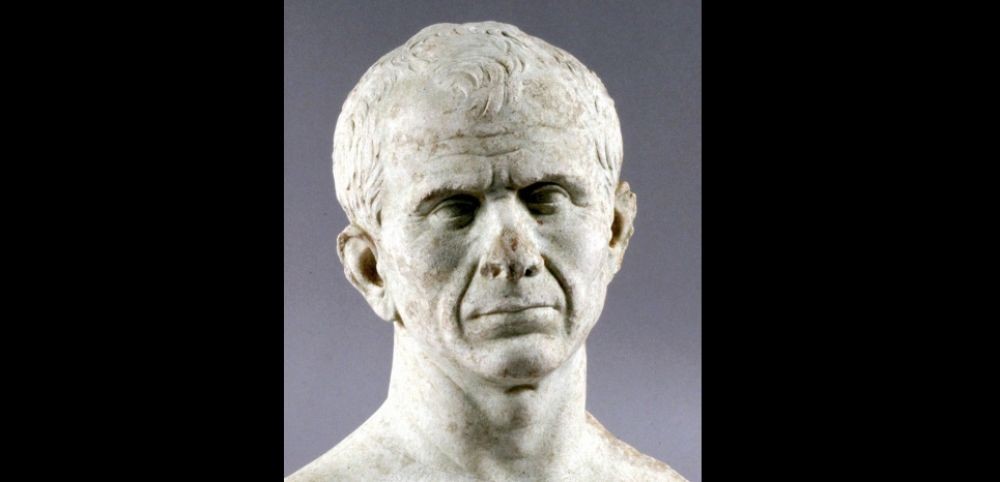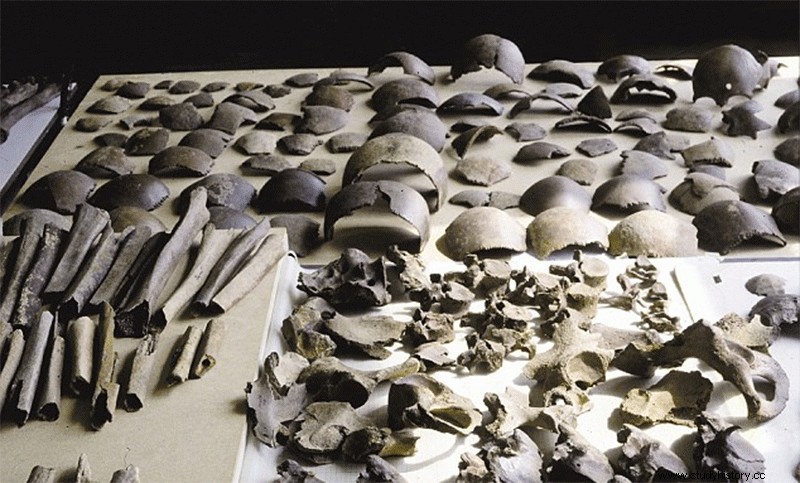 Julius Caesar is said to have crushed two groups of Germans in the Kessel region of the Netherlands in a reported battle in The Gallic Wars.
Julius Caesar is said to have crushed two groups of Germans in the Kessel region of the Netherlands in a reported battle in The Gallic Wars. BATTLE. Vici, vedi, vici *…The site of a battle described by Caesar in The Gallic Wars (De bello gallico ), which took place in a previously unidentified territory, was reportedly found in the regions of Kessel and Heerewaarden, in North Brabant (Netherlands). This was confirmed on December 11, 2015 by archaeologist Nico Royman of the Vrije University (VU) in Amsterdam. The great Dutch specialist in the Iron Age has indeed revealed the discovery on the spot of a large quantity of weapons (swords, spearheads) and especially human remains dated from the 1 st .> century before our era. These remains would mark the site of a battle that took place in 55 BC during the wars of conquest of Julius Caesar, then proconsul of Rome. The bones of the 100 bodies that were excavated would clearly show signs of wounds caused by weapons. During this violent confrontation, the Roman legions* would have crushed two Germanic tribes. "This is the first time that the presence of Caesar and his legions has been explicitly demonstrated on Dutch territory" , said Nico Royman.

Overview of the human remains unearthed at the battle site in the region of Kessel (Netherlands), where Caesar's legions and two groups of Germans would have opposed each other. ©Vrije University of Amsterdam
Ruthless Destruction
The two Germanic tribes, the Tenctera and the Usipetes, originating from the east of the Rhine, would have crossed the river, persecuted by the Suevi, another Germanic group. They would then have requested asylum from Caesar, who would have refused, ordering his eight legions to destroy them ruthlessly. "Today we would talk about genocide" , added the researcher. But in his famous book on the Gallic war, Caesar reports (word of the winner) that the cavalry of the Germans had first attacked his soldiers, after having broken a truce by trickery. The Roman revenge will therefore have been terrible. Caesar mentions without the slightest emotion that the Germans were surprised in their camps, which left no chance for men, women or children to escape (see box below).
* "I came, I saw, I conquered"

Swords and weapons discovered at the site of Kessel (Netherlands). © Vrije University of Amsterdam
The battle reported in Book 4 of Caesar's "De Bello Gallico", as they appear in chapters 14 and 15 :
[4, 14]
(1) After drawing up the army in three lines and making a rapid march of eight miles, he arrived at the camp of the Germans before they could know what had happened. (2) Struck both with sudden terror both by the promptness of our arrival and by the absence of their leaders; having no time either to deliberate or to take up arms, they did not know, in their confusion, whether they should march against us, defend the camp or seek their salvation in flight. (3) Their terror was manifested by shouts and great disorder:our soldiers, animated by the treachery of the day before, fell on the camp. (4) There those who could take up arms promptly put up some resistance and fought between chariots and baggage; (5) but the multitude of children and women (for the Germans had come out of their country and had crossed the Rhine with all that they possessed), began to flee on all sides; Caesar sent the cavalry in pursuit.
[4, 15]
(1) The Germans, hearing cries behind them and seeing the carnage that was being made of theirs, threw down their arms, abandoned their ensigns, and escaped from the camp. (2) When they had arrived at the confluence of the Meuse and the Rhine, when the hope of prolonging their flight was deprived of them, and when a great number of them had been killed, what remained of them rushed into the river, and perishes there, overwhelmed by fear, fatigue, and the force of the current.
"Pliny the Elder (23-79), after expressing his enthusiasm for Caesar's intelligence, had added a startlingly modern commentary. After estimating the death toll from the Gallic Wars at 1,192,000 , he adds that he will not give [Caesar] "a claim to glory for such a crime against humanity" , recounts in his book The Roman War , the historian of antiquity Yann Le Bohec, professor emeritus at the Sorbonne (Paris).
Legion: heavy infantry unit, a legion had about 5000 men on average (sometimes 6000 in time of war, and 4000 in time of peace). It was divided into ten cohorts, consisting of three maniples and six centuries each. It also included 132 horsemen, obeying centurions, a number later increased to 726 at the time of Emperor Galen (218-268). It is good to remember, for those who will do the accounts, that a century was never composed of 100 men, but rather of about sixty. Each was designated by three elements:the title of the legion, a number and a nickname, following the example of the Legio III Augusta .
These data are taken from The Roman War , by Yann Le Bohec.
